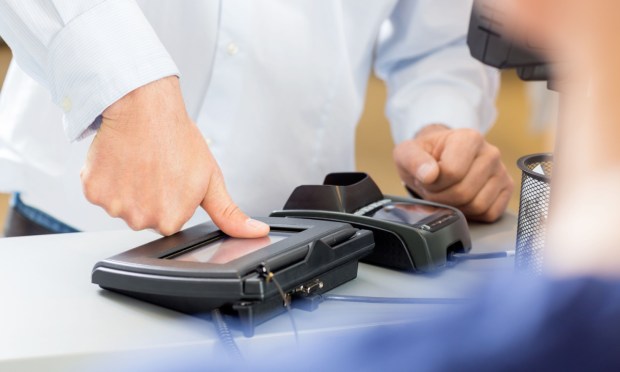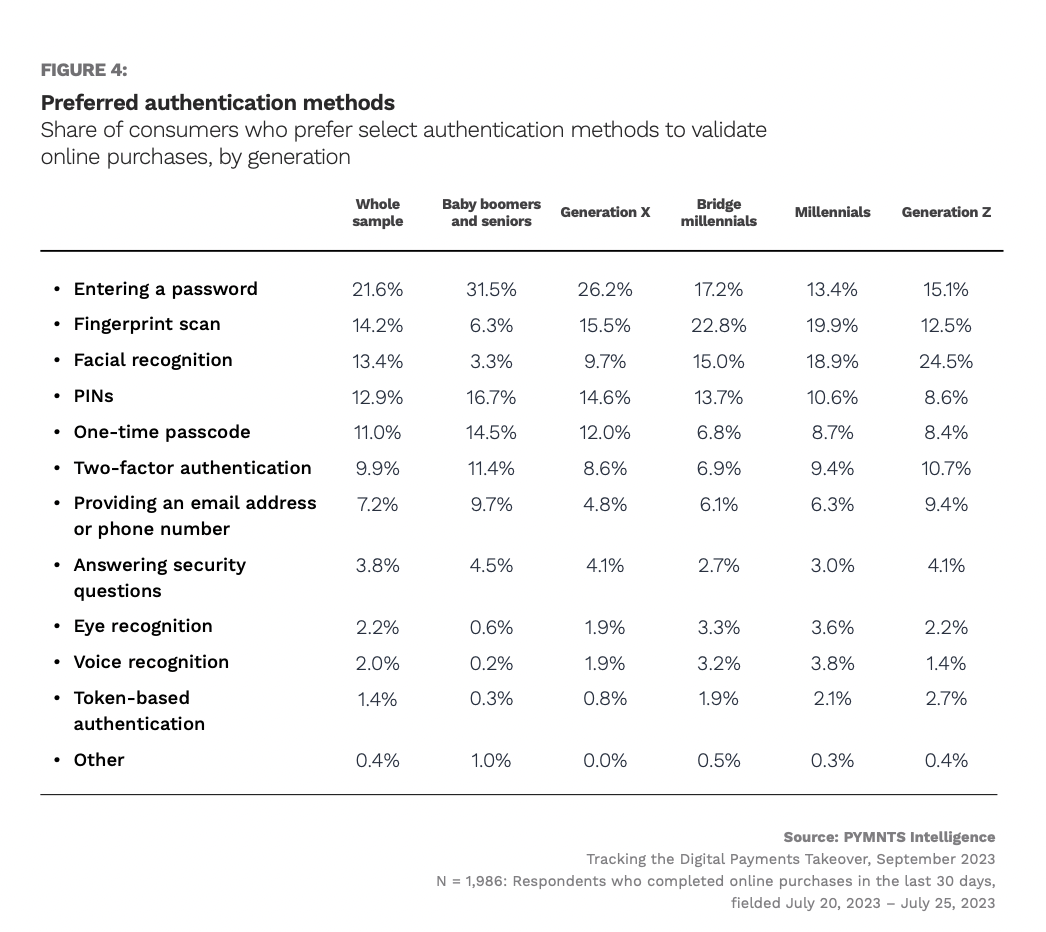Restaurants Considering Biometric Payments May Want to Try Fingerprint Scans

As biometric payments catch on across industries, restaurants looking to use these technologies to reduce friction in transactions may be best served by fingerprint scan technology, even if facial recognition is more common, PYMNTS Intelligence suggests.
By the Numbers
PYMNTS’ study “Tracking the Digital Payments Takeover: Biometric Authentication in the Age of Mobile,” created in collaboration with AWS, which draws from a census-balanced survey of more than 3,200 U.S. consumers, reveals that facial recognition is the most common kind of biometric payment for shoppers to come into contact with.

Specifically, the study found that 28% consumers had used facial recognition to validate an online purchase in the last 30 days, while a slightly lower 27% said the same of fingerprint scans.
Yet consumers prefer fingerprint scans to facial recognition. The study found that 14% of consumers choose the former as their preferred authentication method, while only 13% said the same of the latter.
The Data in Context
This preference is worthwhile for restaurants to keep in mind as more brands tap biometric payments.
This summer, for instance, casual dining chain Steak ‘n Shake, which has more than 500 locations around the world, announced that it is deploying payments technology company PopID’s pay-by-face capabilities at select locations, with plans to expand it to 300 restaurants.
Meanwhile, fast-casual chain Panera Bread announced this spring that it is rolling out Amazon One pay-by-palm capabilities for rewards members.
“Some of the more advanced things that you see there — the things that feel futuristic, like … facial recognition — those exists today,” Olo CEO Noah Glass told PYMNTS in an interview. “What’s new is this idea that everything is tied back to a single guest profile, that [we can] bring forth, what [the customer has] ordered in the past, what they like what they dislike, and we can make recommendations based on the larger data set.”
